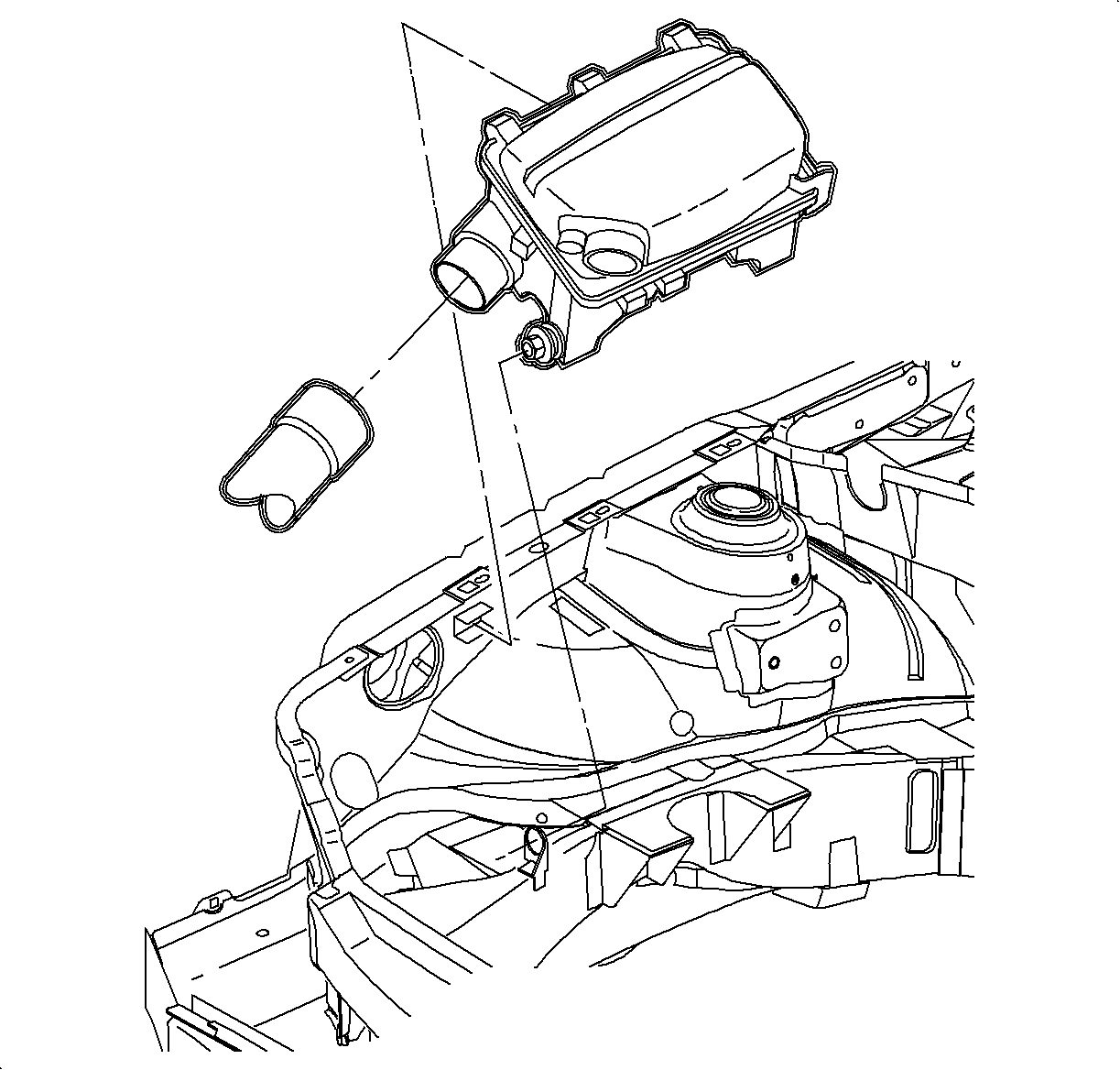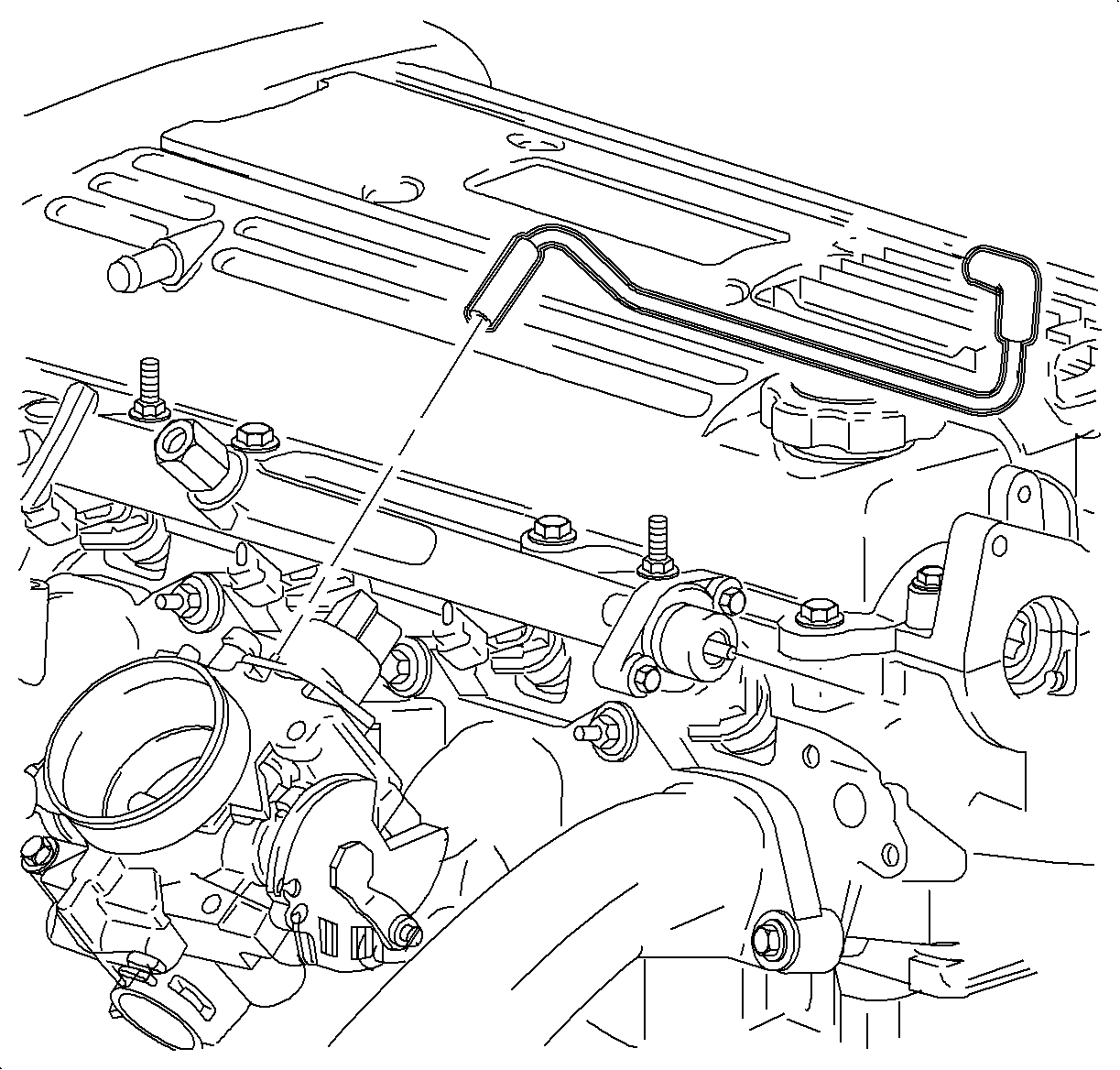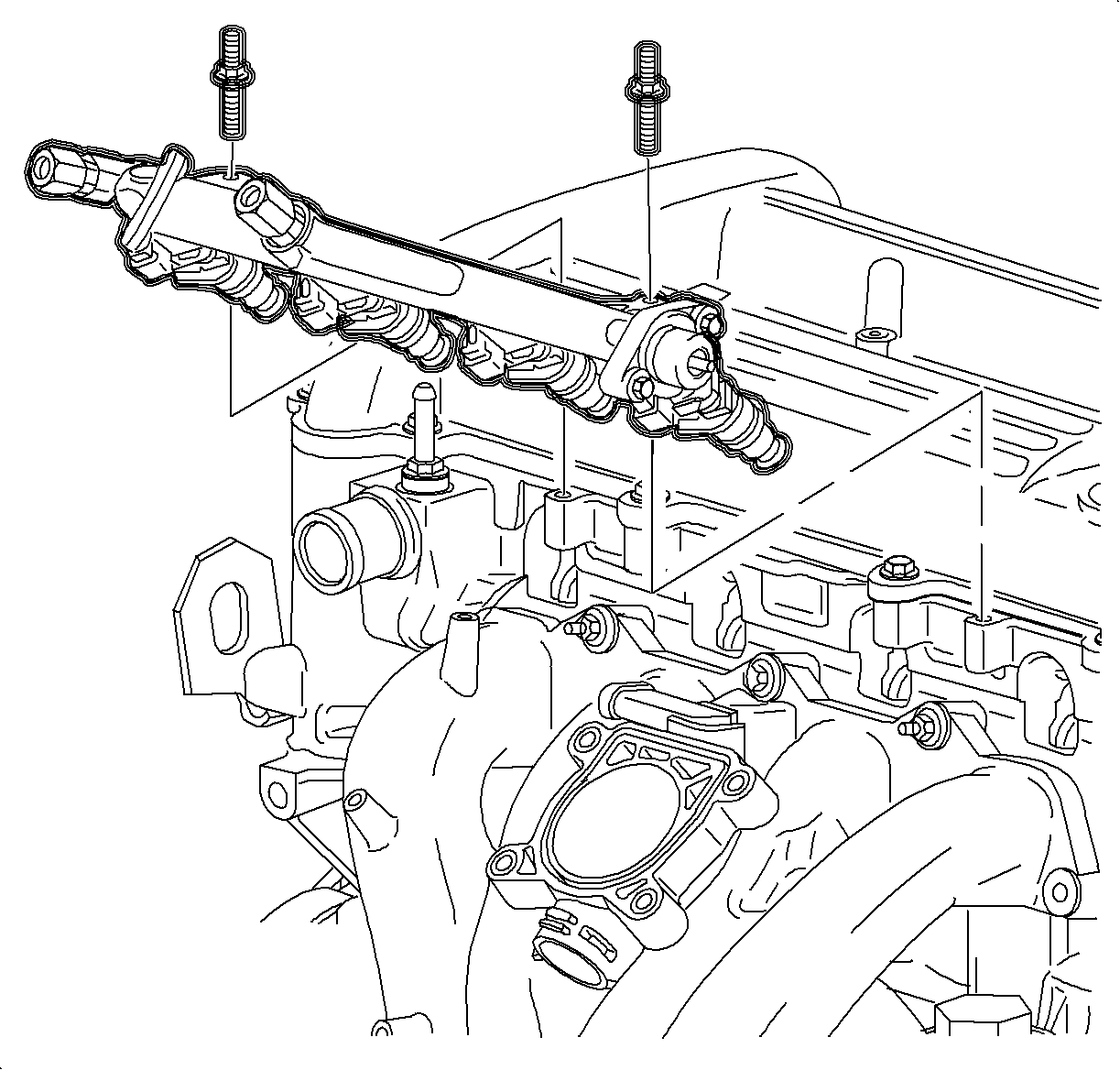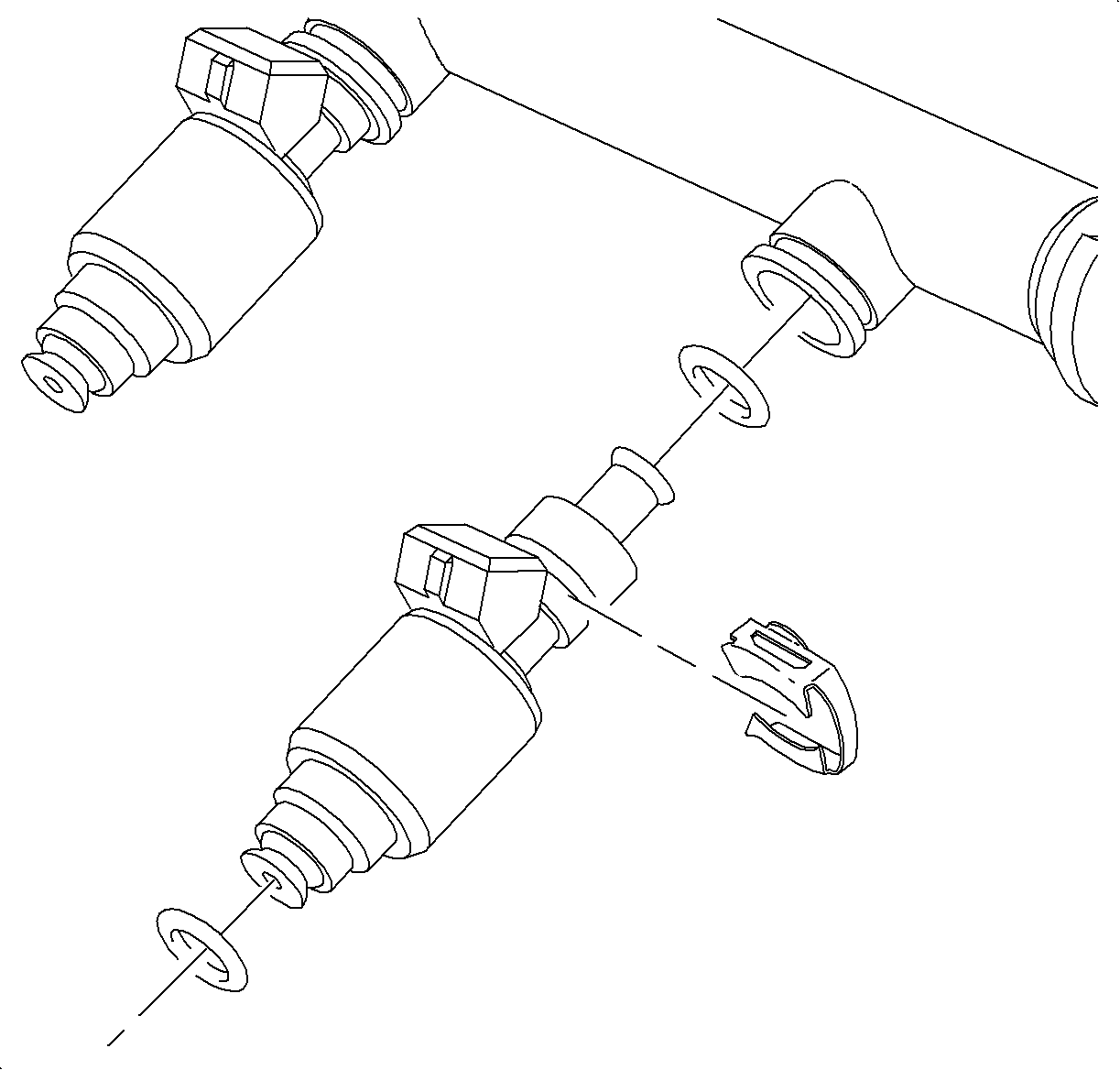
Caution: Do not allow smoking or the use of open flames in the area where work on the
fuel or EVAP system is taking place. Anytime work is being done on the
fuel system, disconnect the negative battery cable, except for those tests where battery
voltage is required.
Important: When servicing the fuel rail assembly, be
careful to prevent dirt and other contaminants from entering the fuel passages. Fittings
should be capped and holes plugged during servicing. Before removal, the fuel rail
may be cleaned with a spray type engine cleaner, ACDelco X-30A, or equivalent, following
the package instructions. Do not soak the rails in liquid cleaning solvent.
- Disconnect the negative battery terminal.
- Remove the air intake tube and fresh air tube.

Caution: Whenever fuel line fittings are loosened or disconnected, wrap a shop cloth
around the fitting to collect fuel. Place the cloth in an approved container.
- Relieve the fuel system pressure. Refer to
Fuel System Diagnosis
.

- Disconnect the fuel pressure regulator hose
from the throttle body and the fuel rail.
Caution: Whenever fuel line fittings are loosened or disconnected, wrap a shop cloth
around the fitting to collect fuel. Place the cloth in an approved container.
- Disconnect the fuel supply line by compressing the 2 plastic retainer
tabs and pulling on the fuel supply line. Remove and discard the plastic retainer.
- Remove the throttle body.
- Remove the throttle control cable bracket bolts, disconnect the cable
from the throttle lever, and lay it over the intake manifold.
- Disconnect the injector electrical connectors.

- Remove the fuel rail assembly attachment bolts.
Notice: Use care in removing the fuel rail assembly to prevent damage to the electrical
connector terminals and spray tips. The fuel injector is serviced as a complete assembly
only. Support fuel after fuel rail is removed in order to avoid damaging fuel rail
components. Since it is electrical, it should not be immersed in any cleaner.
- Remove the fuel rail assembly:
| 10.1. | Carefully pull the rail back and upward to remove the injectors from the
cylinder head ports. |
| 10.2. | Move the rail towards the power steering pump. |
| 10.3. | Rotate the rail so the injectors point downward. |
| | Important: Whenever the fuel rail is removed for service,
the injectors must be removed and upper and lower injector O-rings must be replaced.
|
| 10.4. | Lift the #1 injector and remove the rail. |

- Remove the clips retaining the fuel injectors and pull the injectors out of
the rail.
- Disassemble the injector O-ring seals, using a special seal removal tool
or brass seal pick, from each injector and discard.
Notice: When cleaning or servicing the fuel rail, care must be taken to assure that
the plastic fuel rail surfaces that mate to the injector O-rings are not scratched.
- Lubricate the new O-ring seals with clean engine oil and install the injectors
into the fuel rail.

Important: Lubricate the O-rings at the injector tips
prior to installing the injectors into the intake manifold.
- To install the fuel rail assembly to intake manifold do the following:
| 1.1. | With the injectors pointing downward, lower the fuel line end of the fuel
rail into the cylinder head ports. |
| 1.2. | Rotate the injectors into a horizontal position. |
| 1.3. | Align the injectors with their respective port holes. |
| 1.4. | Carefully push the fuel injectors into the holes making sure they have
seated in the cylinder head. |
Notice: Refer to Fastener Notice in the Preface section.
- Install the fuel rail attaching bolts.
Tighten
Tighten the fuel rail attaching bolts to 10 N·m
(89 lb in).
- Connect the fuel injector electrical connectors. Push in until a click
is heard and pull back to ensure engagement.
- Connect the positive crankcase ventilation (PCV) valve hose and connect
the vacuum line to fuel pressure regulator. Make sure they are fully seated.
Notice: Lubricate with clean engine oil the male end of the fuel rail that connects
with the fuel supply line. Firmly press on the female coupler until a click is heard,
then pull back to confirm engagement. Pinched, kinked, or damaged fuel lines must
be replaced.
- Lubricate with clean engine oil the male fuel feed line and male fuel return
line connections. Attach the fuel feed line and pull back to confirm engagement. Attach
the fuel return line and pull back to confirm engagement.
- Connect the negative battery terminal.
Tighten
Tighten the battery terminal bolts to 17 N·m
(17 lb ft).
- Prime the fuel system.
| 7.1. | Cycle the ignition ON for 5 seconds and then OFF for 10 seconds. |
| 7.2. | Repeat step 7.1 twice. |
| 7.3. | Crank the engine until it starts. The maximum starter motor cranking time
is 20 seconds. |
| 7.4. | If the engine does not start, repeat steps 7.1-7.3. |
- With engine OFF and the ignition ON, pressurize the fuel system and inspect
for leaks.
- Install the air tube and air filter cover.






